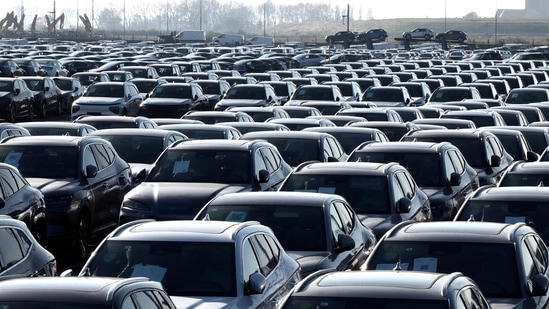Low Festive Season Demand Leaves ₹79,000 Crore Worth of Cars Unsold: Report
In a surprising development, the Indian auto industry experienced lower-than-expected car sales during the recent festive season, typically a peak period for vehicle purchases. According to a report, the slump has resulted in unsold inventory worth approximately ₹79,000 crore, posing significant challenges for manufacturers and dealers. This subdued demand contrasts sharply with prior years when the festive season, fueled by high consumer spending, led to a surge in automobile purchases across the country.
Causes Behind Low Festive Sales:
Industry experts attribute the drop in auto sales to a number of issues. One of the main causes is the growing cost of ownership, which has been made worse by the recent increases in automobile prices and increasing auto loan interest rates. Consumer spending has also become more conservative as a result of economic uncertainty, with many prospective customers opting to postpone or forego buying new cars.
Long supply chain interruptions have also impacted the industry, delaying the timely release of well-liked models. Even while the industry has mostly recovered from the COVID-19 pandemic-related scarcity of semiconductors, some segments are still impacted, especially higher-end models that need sophisticated circuits. Overall sales were impacted by this shortfall since there were fewer vehicles available that were in high demand.
Inventory Pile-Up Across Major Automakers:
Many large automakers have a significant backlog of unsold automobiles as a result of this decline in demand. Dealers across have complained of slow inventory turnover, with many finding it difficult to get rid of last year’s models. Since they account for a significant amount of the unsold inventory, entry-level and mid-segment cars have been especially affected by this circumstance. Luxury and high-end vehicles, on the other hand, have been less affected because of their specialized but steady clientele.
Dealers are making significant discounts and promotions in an attempt to combat the growing supply, but their efforts are not very successful. According to reports, in an effort to draw clients, some showrooms are now concentrating on providing more services and longer warranty periods. Dealers trying to reach sales goals are finding it challenging in the market despite these efforts.
Future Outlook: Will Sales Recover?
Due to both short-term and long-term issues, the Indian automobile industry’s future is still unclear. According to analysts, the sales downturn may last long into the upcoming fiscal quarter unless there is a notable drop in car costs or an improvement in the state of the economy. Unsold inventory impacts the entire supply chain, from transportation companies to suppliers of parts, in addition to being a financial hardship for manufacturers and dealers.
In the future, producers might have to switch to a more flexible production strategy, modifying output in response to current demand. Initiatives like promoting alternate financing alternatives or releasing more reasonably priced models could also aid in increasing demand. As the government and automakers continue to push for cleaner transportation, there is also a growing push for electric vehicles, or EVs. It remains to be seen, though, if this switch to EVs would ease the present sales difficulties.
The current situation demonstrates the instability of the Indian automobile market, which has historically been thought to be among the most promising in the world. Restoring sales momentum and clearing out current inventory may need a combination of consumer-focused advertising, inventory management, and deliberate price adjustments, according to industry experts.


Comments are closed.